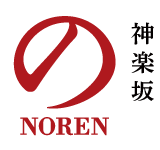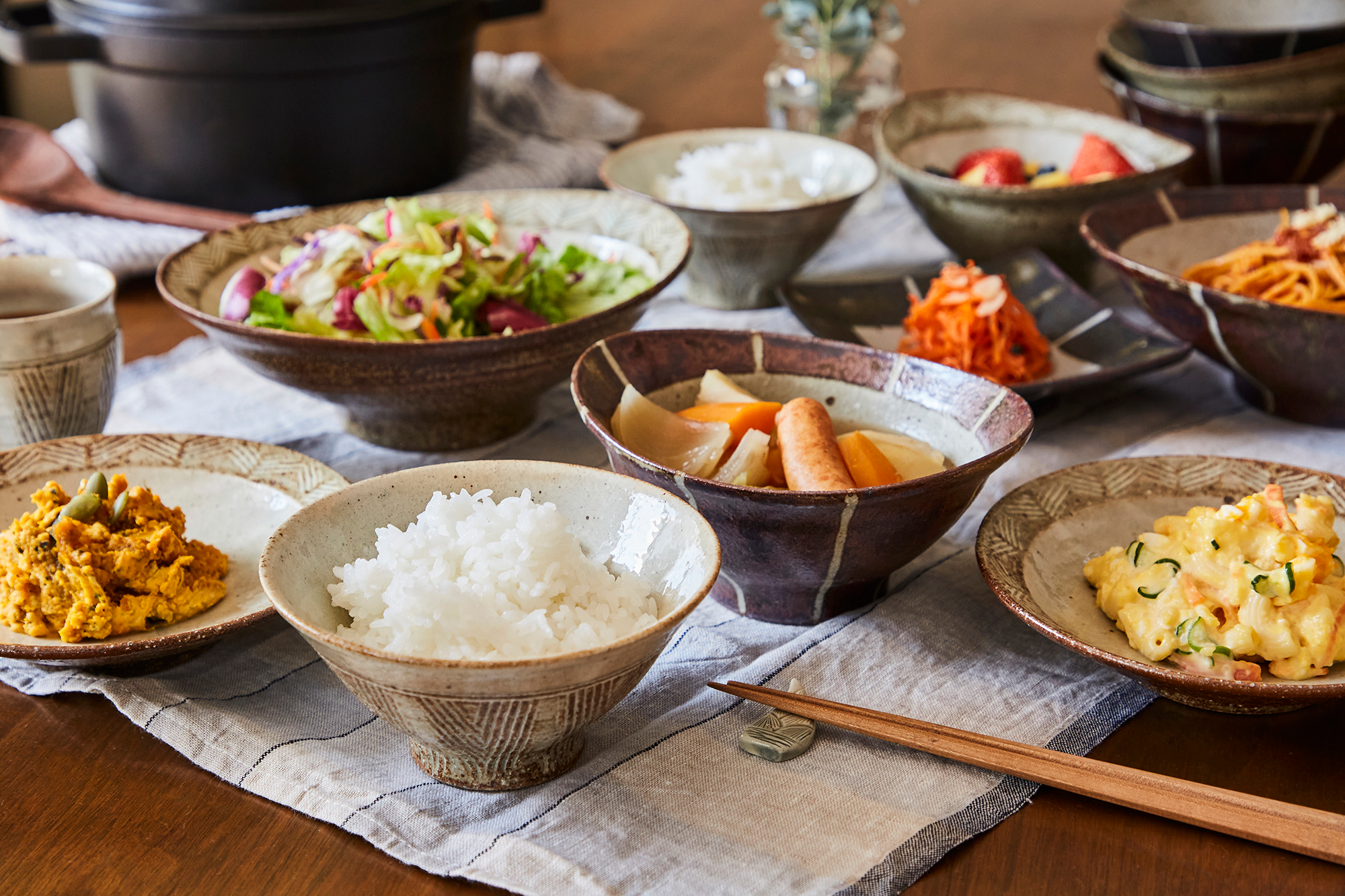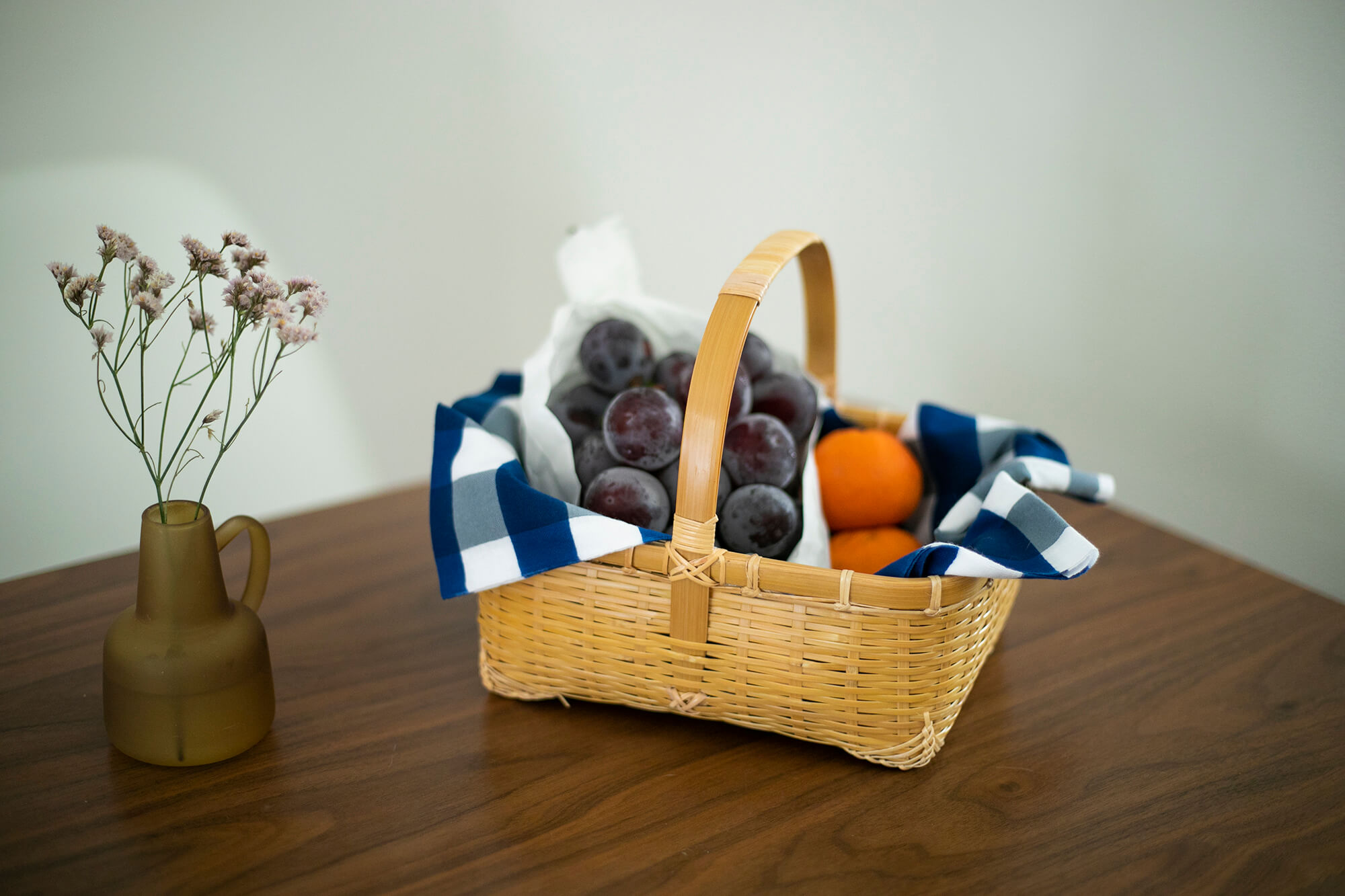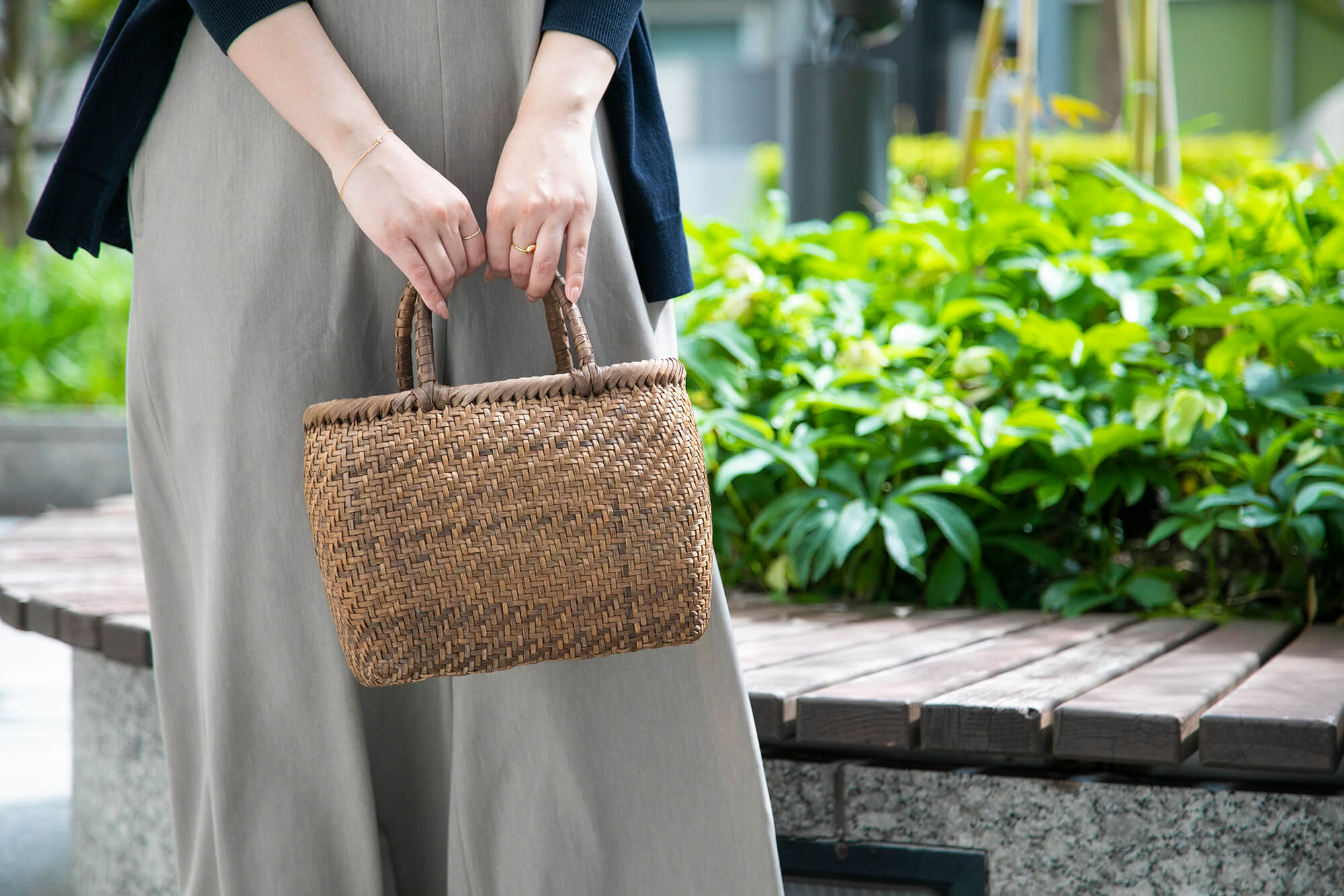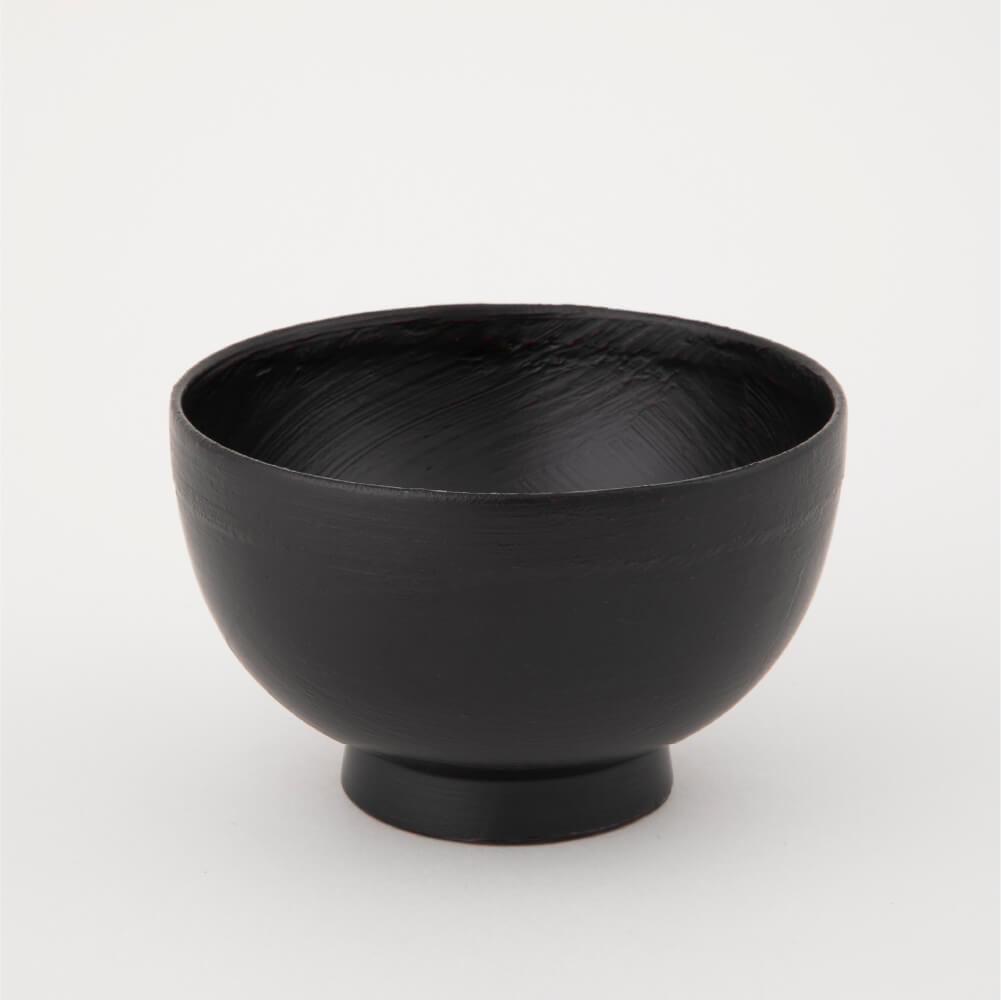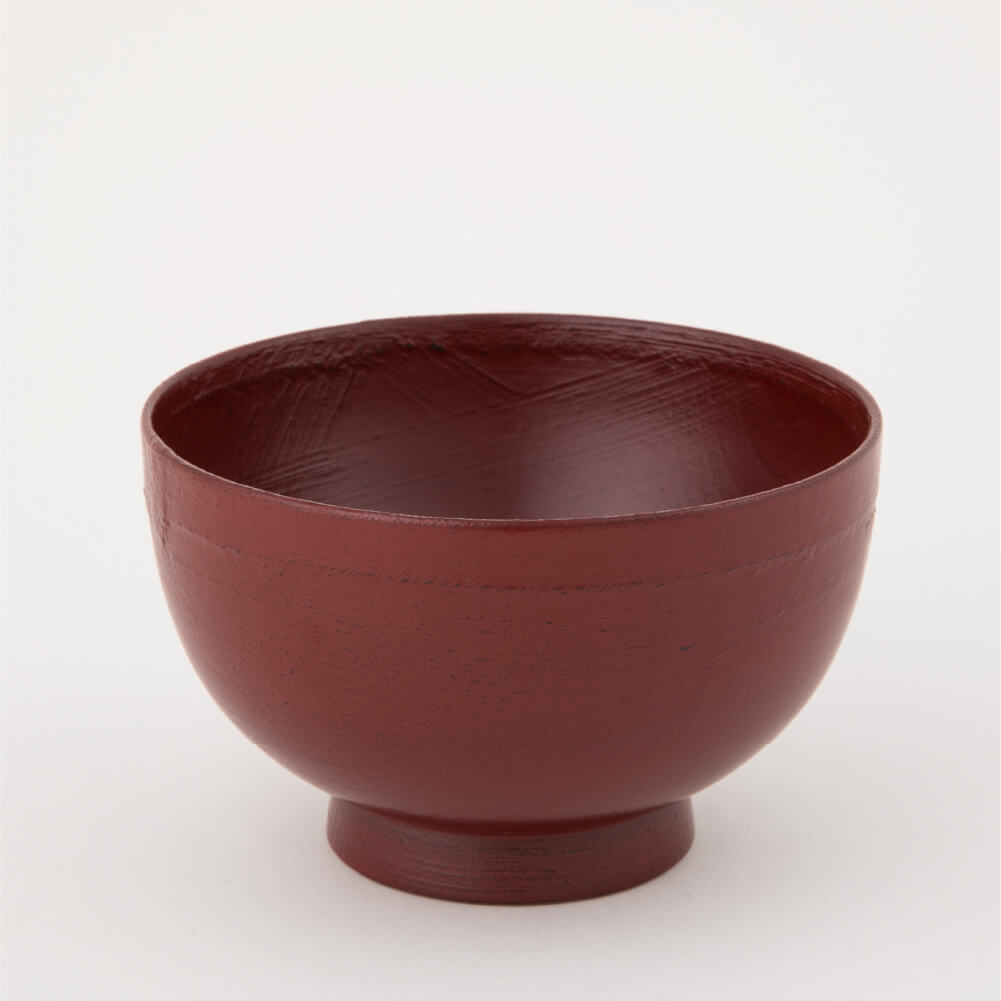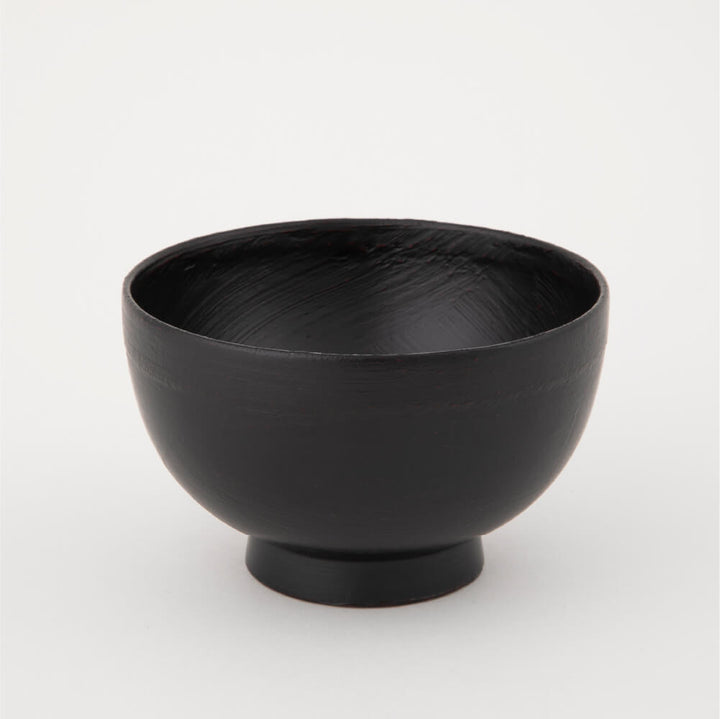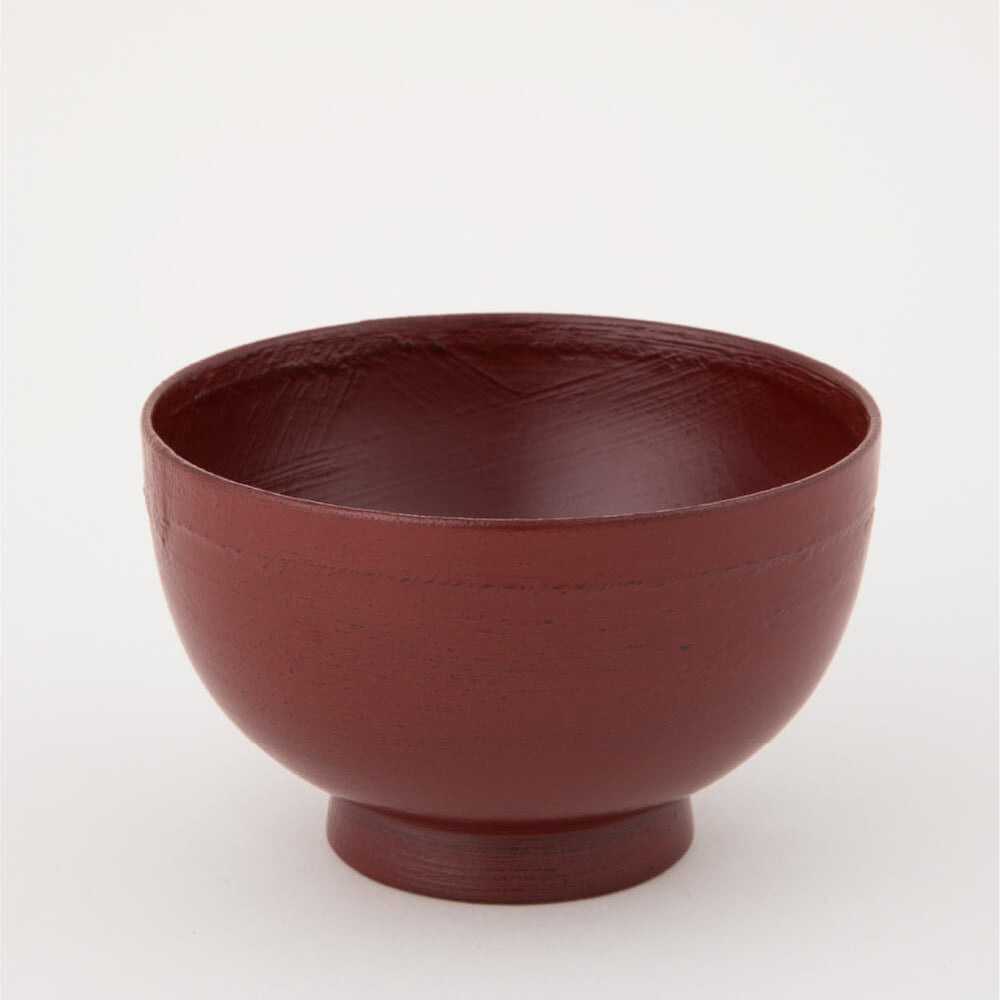-
A brushed lacquer bowl recommended for beginners to lacquerware.
A bowl intentionally left with traces of lacquer applied with a brush.
By suppressing the polishing of the finish, it is strong and hard to peel off. Even if you are new to lacquerware, it is easy to clean.
Meals that support everyday life. Rather than eating a lot of food, it is important to chew well while enjoying the taste of the ingredients, and eat the right amount with a good nutritional balance.
Introducing a lacquerware soup bowl that is easy to use every day. 
-
A lacquer bowl with a hakeme coating.
Isn't it "scratches" and "easy to peel off" when handling lacquerware?
After researching the wood base and the base, it became possible to make a strong pottery by doing kigatame, which is a process that allows the wood base to absorb unrefined lacquer. Each piece is carefully finished by applying an intermediate coat and a top coat on top of the base, and applying lacquer after polishing. 
-
A standard container that can be used for a long time without chipping or scratching.
A Fuchifu soup bowl in which the state of the cloth is also part of the design.
It is a classic container that is easy to clean because it is thick and has a good texture, does not peel off even if you hit the corners, and does not get scratched even if you wash it every day. 
-
A timeless lacquer coating that changes in luster and color as it is used.
Two different colors of lacquer are used for the middle coat and the top coat, and the more you use it, the more the color of the middle coat will appear.
The vermillion color in particular has the characteristic of gradually becoming brighter and more lustrous depending on the air, so you can enjoy how it changes with daily use. -

-

brush dawn
Akebono lacquer is a technique that has been handed down since ancient times.
The more you use it, the more the black lacquer wears off and the vermillion lacquer of the intermediate coating becomes visible here and there. -

brush root
Negoro lacquer is a traditional technique that uses black lacquer for the middle coat and vermillion lacquer for the top coat.
The more you use it, the more the vermilion lacquer is polished away, and the black lacquer of the intermediate coating becomes visible here and there. It is said to have originated from Buddhist altar fittings and tableware made by the monks of Negoro-ji Temple.
-
Sturdy brush coating led by trial and error and conviction.
Lacquerware continued with the awareness that it is "something that is easy to use everyday" rather than a work of art. It is a durable container born after repeated trial and error.
It used to be considered a poor job to leave marks left when applying lacquer with a brush.
Mr. Yamagishi, who has repeatedly tried and errored to create something that is more practical than a work of art, is a specialty of Mr. Yamagishi. 
-

Lacquer ①
Why Lacquer is ValuableAbout 10 years have passed since the lacquer trees were planted.
The season is from mid-June to late October. Beginning around 4:00 in the morning, the lacquer is scratched every five days, and a drop of lacquer is collected from each scratch and collected from dozens or even hundreds of lacquer trees.
Lacquer trees that have grown for 10 years are harvested in just one year, and after they have finished their role, they are all cut down, so it is very important. -

Lacquer ②
Lacquer colors and changesLacquer is translucent in amber color. Black lacquer is made by mixing iron and red lacquer is made by mixing pigments. Lacquer dries and hardens over time, and the color becomes brighter. After painting and drying, the color will be different one day, one month, and half a year later.
In the case of lacquer, it is said that it dries well in areas with high humidity, and it hardens by taking in oxygen from the air with high moisture content.
The vermillion color changes remarkably, and when it comes into contact with the finished color, air, and light, it gradually becomes brighter and harder.
*Please store in a place away from direct sunlight as UV rays may cause the lacquer to deteriorate and discolor.
Since the color of the paint that imitates lacquer does not change, the luster seen on the surface is the greatest feature unique to nature.
The more you use it, the better it tastes, so once you use it, you will become attached to it and you won't be able to let it go.
-
Writer Atsuo Yamagishi
[I want to make easy-to-use lacquerware]
I used to make shiny lacquerware, but I noticed that most customers were worried about how to handle it, so I wanted to make lacquerware that is easy to use.
If you are afraid of scratching the beautiful surface, we aim to create highly practical lacquerware that has the taste of washed jeans and has excellent workability and durability.[Atsuo Yamagishi and Lacquer]
Mr. Yamagishi is a veteran who learned the family business of lacquer painting and started working at the age of 18.
I had doubts about the peeling and weakness of lacquerware, and in order to make strong lacquerware, I faced the lacquer thoroughly.
Since fresh lacquer smells so good, I started using lacquer called Sugurome, which was refined without the use of solvents or oils.
If you don't apply a thin layer of high-grade lacquer, it will shrink and dust will stand out. Therefore, various ingenuity such as applying lacquer as a base and brush marks were applied to create tall lacquerware. 
-
About the product
- size
- φ about 115 mm x H about 70 mm
- material
- Domestically produced zelkova hollow hand-painted, natural lacquer
- capacity
- 300ml
- Producing area
- Sabae City, Fukui Prefecture, Japan
- Handling Precautions
- *Since everything is made by hand, the atmosphere of the brush marks is different one by one. Please enjoy it as the individuality of the container.
*Since natural lacquer is used, the color may vary slightly depending on the environment at the time of production.
*For care, please see "Care Instructions" below.
使用可能熱源
| 食器洗浄機※本体のみ | × |
| 電子レンジ | × |
| 直火※本体のみ | × |
| オーブン※本体のみ | × |
| IH | × |
| グリル※本体のみ | × |
-
お取り扱いのご注意
・Since everything is made by hand, the atmosphere of the brush marks is different one by one. Please enjoy it as the individuality of the container.
・Because natural lacquer is used, the color may vary slightly depending on the environment during production.
・For care, please see "Care Instructions" below.
About returns and exchanges
When the product arrives, please check the product immediately.
We make every effort to ensure that our products are perfect, but in the unlikely event that the product is damaged, we will replace it with a substitute product, so please contact us by email or phone within 7 days after the product arrives.
About defective products
We take all possible measures to ensure the quality of our products, but in the unlikely event that there is a defect in the product, damage during delivery, or incorrect delivery due to our store, please contact us within 7 days from the arrival of the product. We will exchange it for you.
* In this case, the shipping fee will be borne by our shop.
About delivery and payment
Takkyubin Nationwide uniform 700 yen + tax
(Hokkaido, Okinawa, and other remote islands: 1,100 yen + tax)
Free shipping for orders over 10,800 yen (tax included) (*1800 yen + tax for remote islands).
Yu-Packet 280 Yen Nationwide Only some products are available for mail delivery.
*Only available for some products. Due to size restrictions, it may not be possible to use this service when ordering multiple items or when ordering gift wrapping or Noshi.
